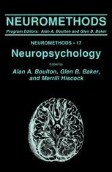Search
Search Results
-
Brain Arteriovenous Malformations: Surgical, Endovascular, and Radiosurgical Techniques
Brain AVMs (arteriovenous malformations) are congenital lesions with a low annual risk but high lifetime risk of morbidity and mortality which is due...
-
Communication with Brain–Computer Interfaces in Medical Decision-Making
Brain–computer interfaces (BCIs) can restore or augment motor functions that have been impaired or lost from traumatic brain injury amputation and...
-
Increased interictal spike activity associated with transient slow wave trains during non-rapid eye movement sleep
Non-rapid eye movement (NREM) sleep is characterized by recurring transient events (Cyclic Alternating Patterns, CAP), some of which consist of...
-
Modern network science of neurological disorders
Modern network science has revealed fundamental aspects of normal brain-network organization, such as small-world and scale-free patterns,...

-
The Utility of EEG, SSEP, and Other Neurophysiologic Tools to Guide Neurocritical Care
Neuromonitoring is an emerging field that aims to characterize real-time neurophysiology to tailor therapy for acute injuries of the central nervous...

-

-
Regional Differences in the Sensitivity of MEG for Interictal Spikes in Epilepsy
MEG interictal spikes as recorded in epilepsy patients are a reflection of intracranial interictal activity. This study investigates the relationship...

-
Advances in treatment of pediatric brain tumors
The long-term survival of children with brain tumor has improved considerably in the last three decades, owing to advances in neuroimaging,...
-
Intraoperative Magnetic Resonance Imaging in the Surgical Treatment of Epilepsy
Epilepsy is the only chronic neurodegenerative disorder that can be cured with surgery. Epilepsy surgery consists of both curative and palliative...
-
Malformations of Cortical Development: Molecular Pathogenesis and Experimental Strategies
Malformations of cortical development (MCD) are developmental brain lesions char-acterized by abnormal formation of the cerebral cortex and a high...
-
Noninvasive Localization of Electromagnetic Epileptic Activity. II. Demonstration of Sublobar Accuracy in Patients with Simultaneous Surface and Depth Recordings
Seven patients with complex partial epileptic seizures undergoing invasive video/EEG-monitoring were investigated with a combination of 10 subdural...
-
A Unique Area of the Homonculus: The Topography of the Primary Somatosensory Cortex in Humans Following Posterior Scalp and Shoulder Stimulation
We recorded somatosensory evoked magnetic field (SEF) to investigate the differentiation in the receptive area for the face, lower part of the...
-
In Vivo Study of the Effect of Valpromide and Valnoctamide in the Pilocarpine Rat Model of Focal Epilepsy
Purpose . We evaluated the effectiveness of the commonly used antiepileptic drug sodium valproate (400 mg/kg) and two of its amide derivatives,... -
Nonlinear dynamics of epileptic seizures on basis of intracranial EEG recordings
Purpose : An understanding of the principles governing the behavior of complex neuronal networks, in particular their capability of generating...
-
Quantitative analysis of epileptic discharges
The methods for analysing the EEG epileptiform activity are discussed and compared. Particular emphasis is placed on studying interictal spike...
-
Electrical Stimulation of the Cerebral Cortex in Humans
After centuries of the theoretical assignment of soul, mind, and bodily functions to various anatomical places, the mid-nineteenth century...
-
Contrast Media for Imaging of the Central Nervous System
The desire to image the brain and spinal cord has been motivated by two major needs: to depict the pathology and to assess the pathophysiology of the...
-

